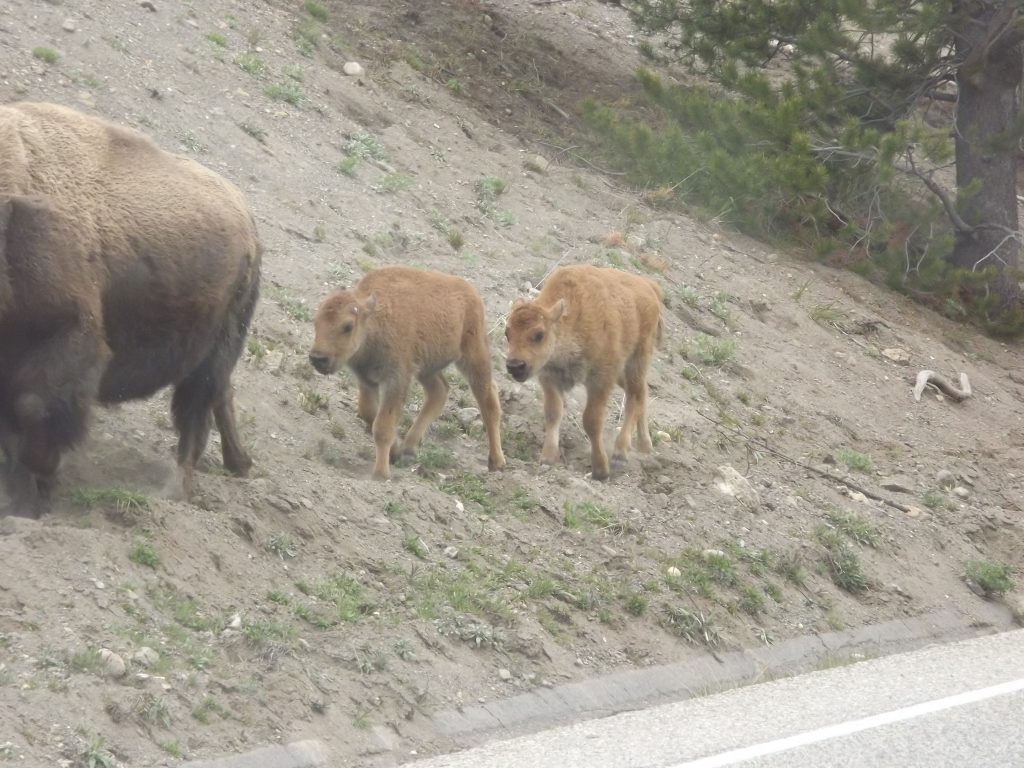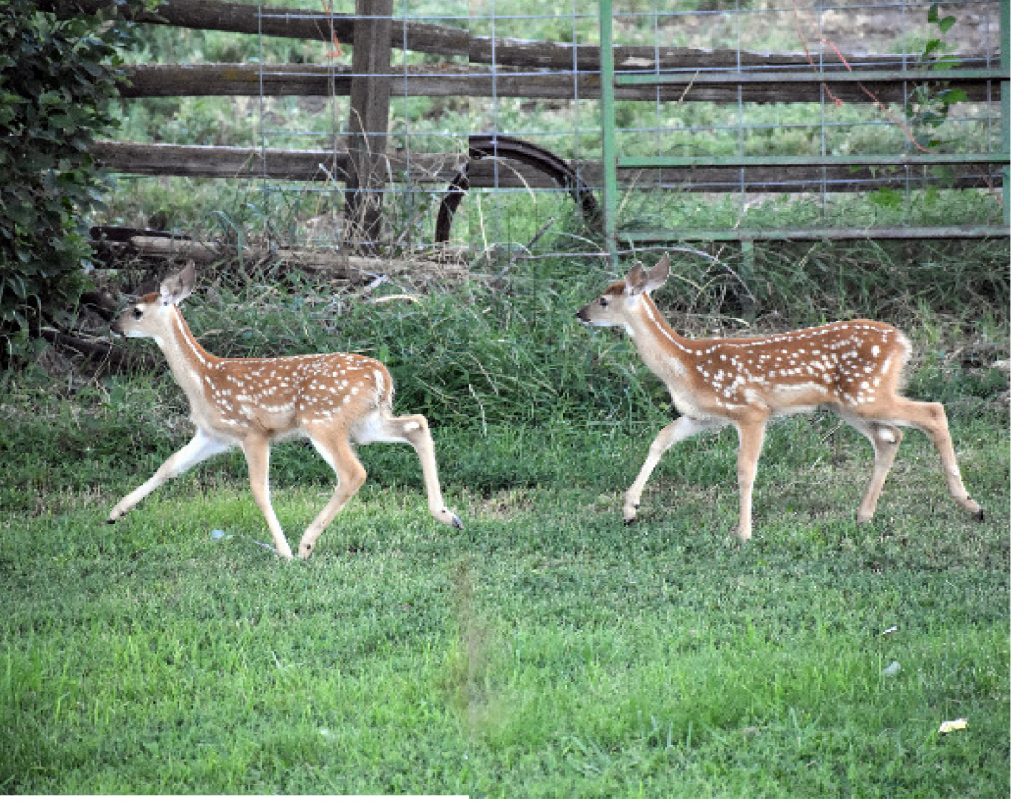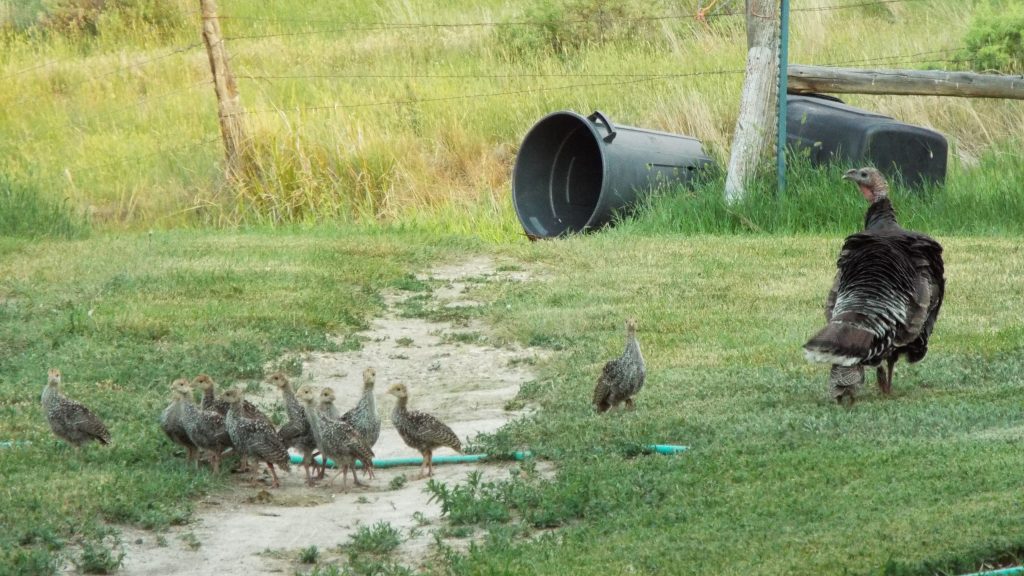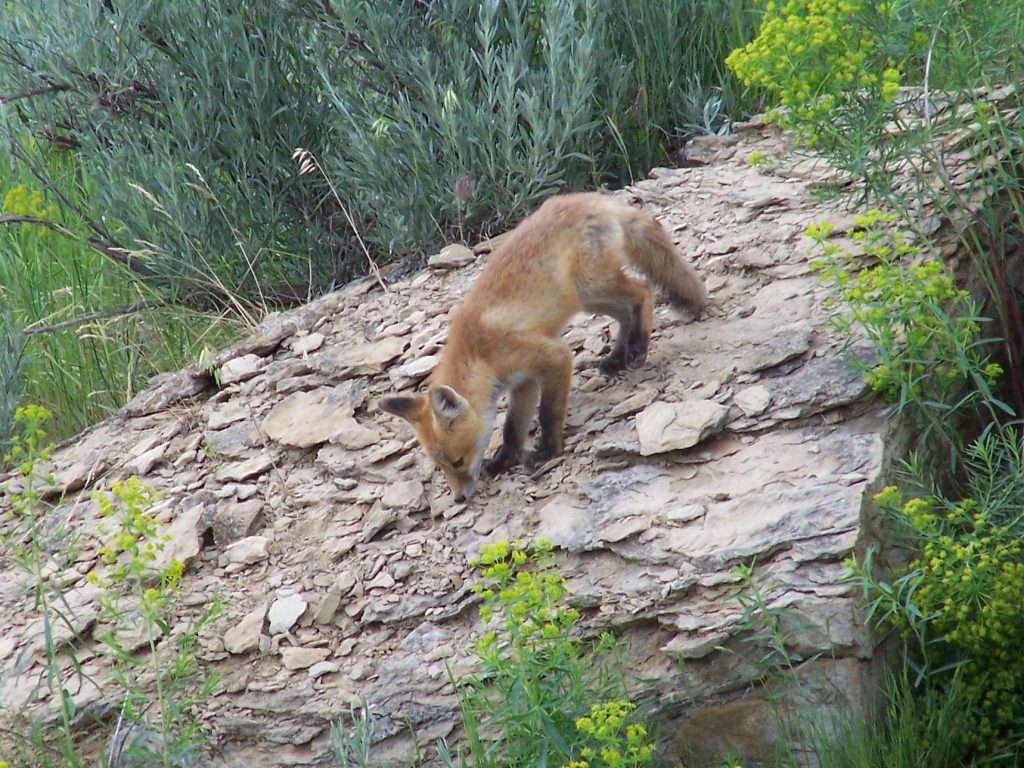News
Leave Young Wildlife Alone

A mother whitetail deer, knowing she was dying of a broken leg, left these fawns in a safe place. A yard.
Spring is here, and deer, pronghorn, elk and other animals and birds are having their young.
Unlike human babies, that are with the mother close for many years, wild animals do things differently.
When they are born, a mother deer leaves her fawns hidden in tall grass or by a sagebrush for around three days, until the fawns are old enough to travel. To protect them, the doe will bed down twin fawns in two different locations. The doe leaves to find food and water for herself, and to not draw attention to their location. Newborns fawns are nearly odorless, so predators cannot find them.
Humans, however, sometimes come upon these baby animals and, trying to be helpful, bring the baby animal home.

According to Christina Schmidt, Wyoming Game and Fish public information specialist for the Sheridan region, said, “We get calls from people every spring, thinking the animals have been abandoned. But this is hardly ever the case. It is a strategy. During the first weeks life the mother hides her baby and goes to feed or water, but she comes back periodically to check on them and let them nurse.”
Schmidt added, “If you are concerned, leave the baby be, but check on it from a distance to avoid stressing out the mother or the baby. If it looks like it has been abandoned, say the mother perhaps was hit by a car, then give us a call here at the Game and Fish office.”
Wildlife may do things differently than humans, but the babies are, “Doing exactly what they are suppose to do until they grow enough to join the herds.”

Pronghorn does usually give birth to twins, and they also hide the fawns in different places to insure survival. Newborn fawns spend 90 percent of their time bedded for the first weeks of their lives. They typically nurse 2 to 3 times daily; increasing to 6 to 8 times as they get older. The fawns actually only see their mother for about to 20-25 minutes each day, and fawns will rejoin the main herd when they are about a week old. The fawns can outrun most predators by that time. They can outrun a human when they are four days old.
Doe deer usually remain within 100 yards of their fawns, so look around when you see a fawn and you will probably see the doe somewhere nearby. At the age of three weeks, deer fawns can outrun most danger. After the first 3-4 weeks of age, twin fawns usually reunite and bed close to each other.
Baby rabbits and baby birds are also often seen in urban and rural areas.

“Children often encounter baby birds out of the nest,” Schmidt said. “This happens. Especially when they are learning to fly. The mother birds are nearby, and they will continue to feed the baby on the ground. Young children should be taught to leave the baby alone, he will learn to fly. There is nothing to do to help it. If you have pets, you might make sure that outside cats are kept in during the week the baby birds are learning to fly, and the dog can be walked on a lease to avoid the pets hurting the baby. If you find injured baby animals, or animals that you know for sure are orphaned, call the Game and Fish.”

Although not as cute and cuddly as fawns and rabbits and birds, children should also be taught not to play with small snakes. A baby rattlesnake and a young bull snake look very much alike. A baby rattlesnake, although it does not have as much venom as an adult, can still inject venom.
So, the best course of action when one encounters new born wildlife of any kind is to leave it alone. Most have mothers nearby, and they are doing what their instincts tell them to do. Well meaning humans can often do more harm than good.


Cindy Livingston
June 4, 2021 at 9:15 am
Really good information! Thank you.